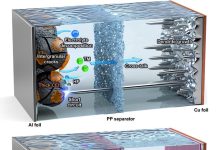
Artificial intelligence (AI) has changed the world in big ways—from powering voice assistants to transforming healthcare and transportation.
But as AI gets smarter, it also needs more computing power.
This growing demand means today’s AI systems, which mostly run on powerful graphics processing units (GPUs), use a lot of electricity and generate high costs.
To keep AI development moving forward, scientists are searching for faster, more energy-efficient alternatives.
Now, researchers at Hewlett Packard Labs, led by Dr. Bassem Tossoun, have made a major breakthrough. They’ve created a new kind of AI hardware that uses light instead of electricity.
Published in the IEEE Journal of Selected Topics in Quantum Electronics, their work shows how photonic integrated circuits (PICs) could replace traditional chips in the future.
Unlike current systems that rely on electronic neural networks, this new platform uses optical neural networks (ONNs), where data is processed using light.
Light travels faster than electricity and wastes less energy, making this a much more efficient option. However, making complex light-based circuits is challenging—especially with silicon, the material usually used in chips.
To solve this, the team combined silicon with special materials called III-V compound semiconductors (like indium phosphide or gallium arsenide).
These materials are great for controlling light and can help create tiny lasers and amplifiers directly on the chip.
By bonding these materials onto silicon wafers, the team built a more advanced and scalable platform that supports the entire structure of a photonic AI chip.
Their process involved several high-tech steps: shaping the silicon base with etching, growing layers of silicon and germanium for light detection, and bonding the III-V semiconductors.
Then, they added ultra-thin layers of metal oxides to boost performance and protect the device with a thick covering.
The final result is a tiny chip that can run AI programs much faster and with far less energy than today’s best digital chips. In fact, the new platform is nearly 290 times more energy-efficient than other photonic systems and 140 times better than cutting-edge electronic ones.
This technology could change how we build future AI systems—especially in data centers that need to process massive amounts of information. With this new chip design, we can expect AI that’s not only smarter but also greener and more sustainable.
As the need for AI keeps growing, innovations like this will be key to making sure we can keep up—without burning out the planet in the process.
Source: KSR.



